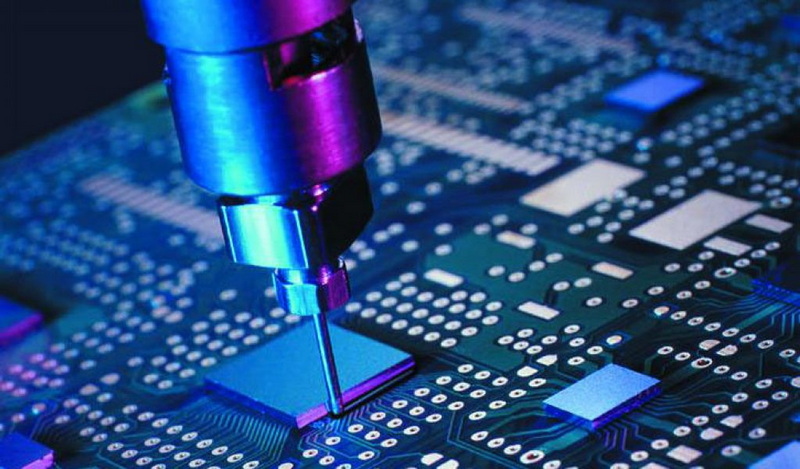Content Menu
● Introduction
● The Evolution of Surface Mount Technology
>> Key Advantages of SMT
● The Role of AI in SMT
>> Enhanced Quality Control
>> Predictive Maintenance
>> Process Optimization
>> Design Automation
>> Supply Chain Management
● Challenges and Considerations
● Conclusion
● Related Questions
>> 1. What is Surface Mount Technology (SMT)?
>> 2. How does AI improve quality control in SMT?
>> 3. What are the benefits of predictive maintenance in SMT?
>> 4. How can AI optimize SMT processes?
>> 5. What challenges does AI integration pose for SMT manufacturers?
Introduction
Surface Mount Technology (SMT) has revolutionized the electronics manufacturing industry by allowing for the miniaturization of components and enhancing production efficiency. As we look to the future, the integration of Artificial Intelligence (AI) into SMT processes promises to further transform this field. This article explores the potential roles AI will play in the future of surface mount technology, examining its impact on efficiency, quality control, and innovation.

The Evolution of Surface Mount Technology
Surface Mount Technology emerged in the 1960s and has since become the standard for assembling electronic components onto printed circuit boards (PCBs). Unlike traditional through-hole technology, SMT allows components to be mounted directly onto the surface of PCBs, enabling a more compact design and higher component density. This shift has been crucial in the development of modern electronics, from smartphones to automotive systems.
Key Advantages of SMT
1. Space Efficiency: SMT components are smaller and lighter, allowing for more compact designs.
2. Automated Assembly: The use of machines for placement and soldering has increased production speed and reduced labor costs.
3. Improved Performance: Shorter electrical paths in SMT can lead to better performance and reduced signal loss.
The Role of AI in SMT
As the demand for more sophisticated electronic devices grows, the role of AI in SMT is becoming increasingly significant. Here are several ways AI is expected to influence the future of surface mount technology:
Enhanced Quality Control
AI can significantly improve quality control processes in SMT. By utilizing machine learning algorithms, AI systems can analyze data from production lines to identify patterns and detect anomalies. This capability allows for real-time monitoring of the manufacturing process, leading to quicker identification of defects and reduced waste.
- Visual Quality Inspection (VQI): AI-powered cameras can inspect PCBs for defects, such as misaligned components or soldering issues, with greater accuracy than human inspectors. This technology not only speeds up the inspection process but also enhances the reliability of quality assurance.
Predictive Maintenance
AI can also play a crucial role in predictive maintenance for SMT equipment. By analyzing data from machinery, AI systems can predict when a machine is likely to fail or require maintenance. This proactive approach minimizes downtime and extends the lifespan of equipment.
- Data-Driven Insights: AI algorithms can process vast amounts of data from sensors embedded in SMT machines, identifying trends that indicate potential failures. This allows manufacturers to schedule maintenance before issues arise, ensuring continuous production flow.

Process Optimization
AI can optimize SMT processes by analyzing production data to identify inefficiencies. By understanding the factors that affect production speed and quality, AI can suggest adjustments to improve overall performance.
- Dynamic Adjustment: AI systems can dynamically adjust machine settings based on real-time data, optimizing parameters such as speed, temperature, and pressure during the soldering process. This adaptability can lead to higher yields and lower defect rates.
Design Automation
The integration of AI in the design phase of PCBs can streamline the development process. AI algorithms can assist engineers in creating more efficient layouts by simulating various design scenarios and predicting their performance.
- Generative Design: AI can generate multiple design options based on specified criteria, allowing engineers to explore innovative solutions that may not have been considered otherwise. This capability can lead to more efficient and effective designs.
Supply Chain Management
AI can enhance supply chain management in SMT by predicting demand and optimizing inventory levels. By analyzing market trends and historical data, AI systems can help manufacturers make informed decisions about production schedules and material procurement.
- Demand Forecasting: AI algorithms can analyze sales data and market conditions to forecast future demand for electronic components, ensuring that manufacturers have the right materials on hand when needed.
Challenges and Considerations
While the integration of AI into SMT presents numerous benefits, there are also challenges to consider. The initial investment in AI technology can be significant, and there may be a learning curve for employees as they adapt to new systems. Additionally, concerns about data security and the potential for job displacement must be addressed.
Conclusion
The future of surface mount technology is poised for significant transformation through the integration of AI. From enhancing quality control and predictive maintenance to optimizing processes and improving supply chain management, AI has the potential to revolutionize SMT. As manufacturers embrace these advancements, they will not only improve efficiency and reduce costs but also pave the way for the next generation of electronic devices.

Related Questions
1. What is Surface Mount Technology (SMT)?
Surface Mount Technology (SMT) is a method for producing electronic circuits in which the components are mounted directly onto the surface of PCBs. This technology allows for smaller, lighter, and more efficient electronic devices.
2. How does AI improve quality control in SMT?
AI improves quality control in SMT by using machine learning algorithms to analyze production data, enabling real-time monitoring and detection of defects through visual inspection systems.
3. What are the benefits of predictive maintenance in SMT?
Predictive maintenance in SMT helps minimize downtime and extend equipment lifespan by predicting when machines are likely to fail, allowing for timely maintenance before issues arise.
4. How can AI optimize SMT processes?
AI can optimize SMT processes by analyzing production data to identify inefficiencies and dynamically adjusting machine settings based on real-time data to improve yield and reduce defects.
5. What challenges does AI integration pose for SMT manufacturers?
Challenges include the significant initial investment in AI technology, the need for employee training, and concerns about data security and potential job displacement.




















